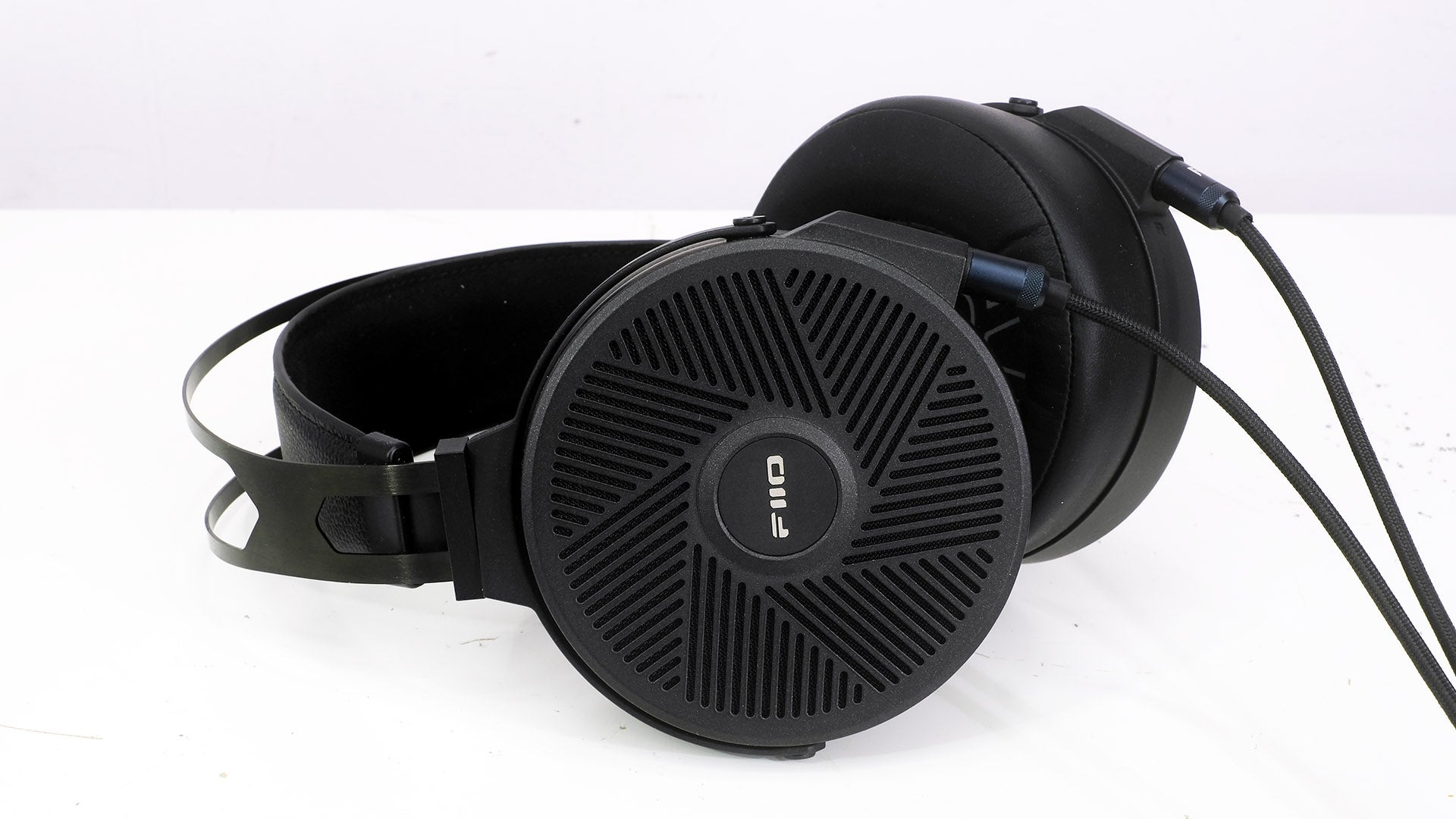Verdict
FiiO’s first planar magnetic headphones don’t sound like the competition, with a thicker and richer presentation than most. Just make sure you can make peace with how the mid-bass limits transparency a little before buying.
Pros
- Tough metal cups
- Comfortable
- Fun, high-resolution sound
Cons
- Bonus mid-bass dampens the planar appeal a little
- Slightly edgy styling may turn off some
-
Planar magnetic driverLarge 90mm planar magnetic driver -
36 ohm impendancePair of headphones that are relatively easy to drive -
WeightWeighs 456g with including the cables
Introduction
You may know FiiO for its DACs, portable music players, amps or its in-ear headphones. But you probably don’t know if for full-size headphones like the FiiO FT5.
The company hasn’t made many. This pair and 2023’s FiiO FT3 are its first attempts at a pair of serious open-backed, full-size hifi-style headphones.
The FiiO FT5 are the more expensive of the two, at £429. Such a price puts then in competition with mega performers like the HiFiMAN Edition XS and Sennheiser HD660S2.
Do they compete? Absolutely. But the sound might not be what you’d assume given the FiiO FT5 have planar magnetic drivers, which are often associated with a controlled and very fast-sounding style, in terms of bass decay. This is an altogether richer, thicker, and grander kind of audio.
The big question: is that what you want?
Design
- Study metal cups
- Removable cabling
- Hammock-style headband
In almost 15 years of reviewing FiiO stuff, I can only recall one FiiO gadget that didn’t basically feel like a brick of solid aluminium. That was 2010’s FiiO E6, a tiny plastic headphone amp you were meant to be able to clip to your shirt.
The FiiO FT5 have no need for such portability concessions and feel about as close to a brick of metal as you’d want headphones to be. Their outer cup housings are (as far as I can tell) a single piece of metal.
I’m not sure the outer bits of home headphones need to be exceptionally tough, but the FiiO FT5 sure do feel just that. Of course, unless you’re careful you will end up scraping off some of the black finish paint. I’ve managed to slightly nick the headband arm part.
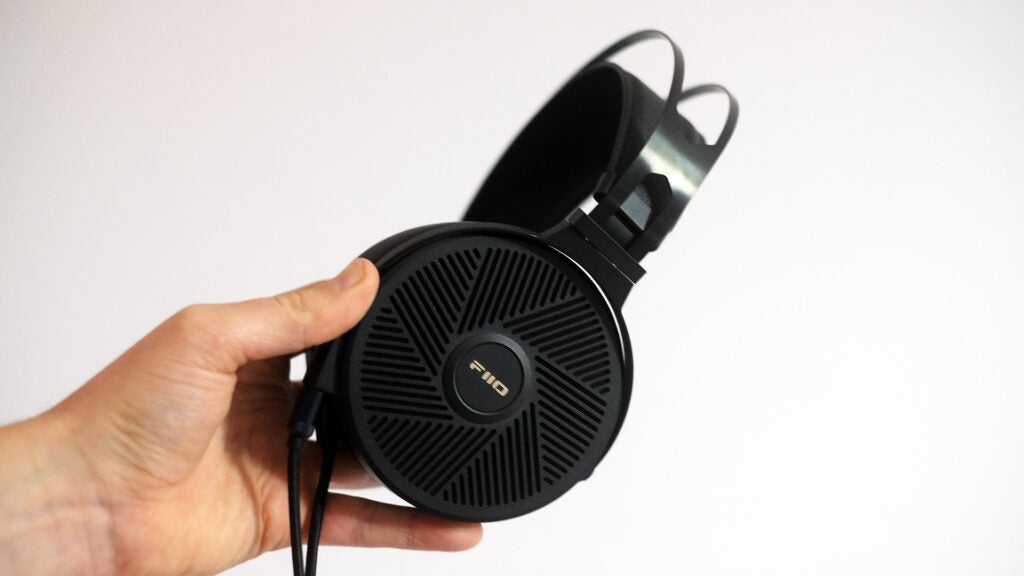
Let’s get some of the basics out of the way. The FiiO FT5 are only well-suited for use at home. They let too much sound in for the outdoors, short of an empty field, and leak too much out for office use.
These are classic, low-tech open-back headphones made with a singular focus on sound.
The FiiO FT5’s design seems roundly inspired by the Audeze range, although the look here is a bit more youthful and edgy. I think FiiO went a bit too far with this edginess in the FT3, which basically look like “gamer” headphones. But these? They get a pass, although I personally prefer the more neutral look of the HifiMAN Sundara or Audeze MM-100.
A lot of these planar magnetic headphones can be quite heavy too, but I find the FiiO FT5 perfectly fine despite their weighty-sounding 456g heft. The hammock-style headband and fairly even pressure of the modest clamping force spread it out nicely.
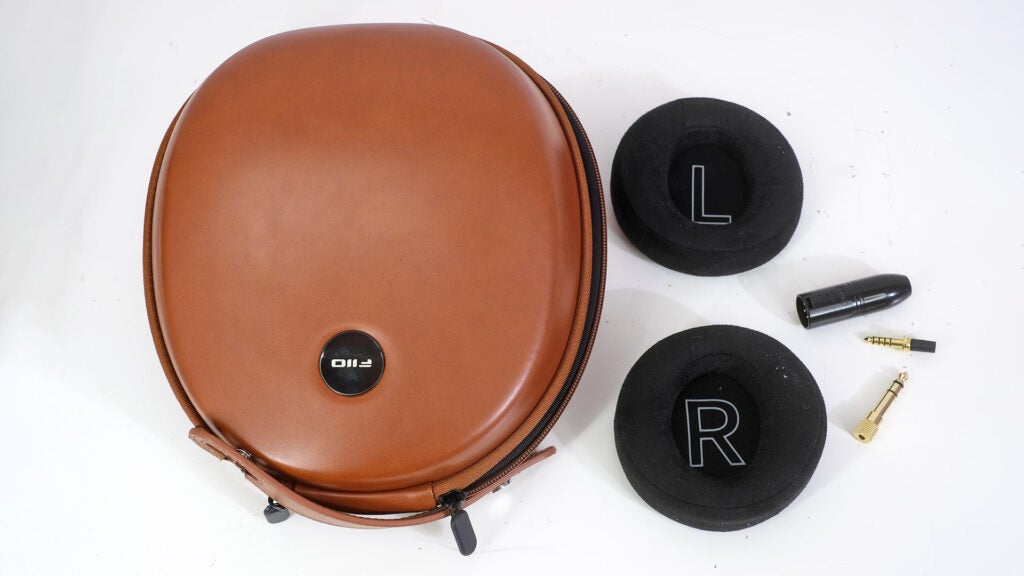
I’ve put in a lot of 4-5 hour sessions with the FiiO FT5: no complaints. It helps that the cups swivel a few degrees from their resting position too.
There’s no folding these headphones flat, though, one reason their bundled carry case is quite as large as it is. Do home headphones like this really need a carry case? I’m not so sure, but the giant fake leather semi-hard one certainly stands out.
FiiO doesn’t use real leather across the case or the headphones. The default pads are synthetic leather, as is the more heavily textured upper of the head strap.
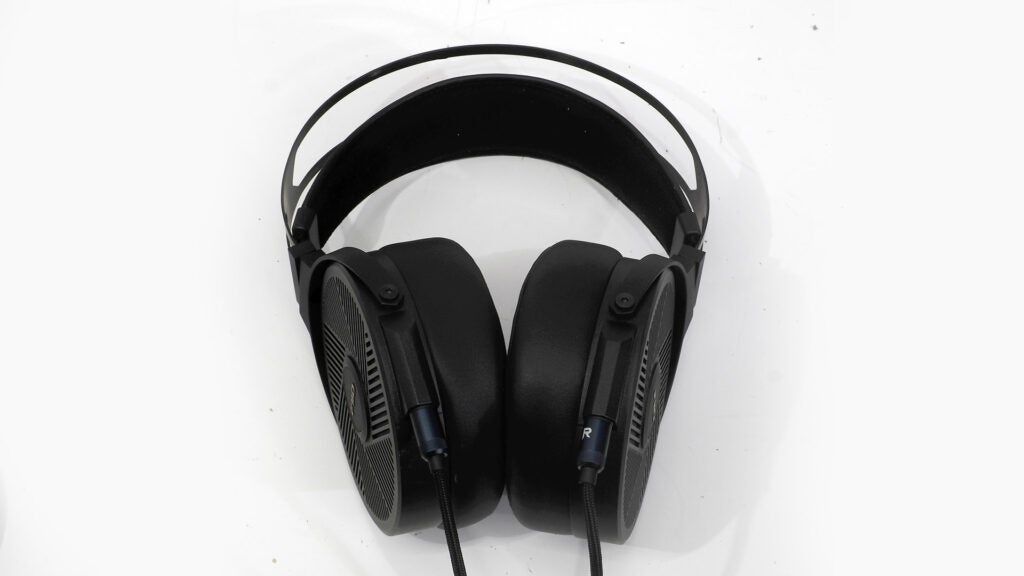
The inner part of the headband that rests on your head is a felt-like material, and FiiO also includes a second pair of pads with a velour finish. These are more breathable, and as such have a slight effect on the sound too. Plus, when HiFiMAN charges up to $129 for largely unremarkable replacement pads, spares are welcome.
FiiO uses a removable cable too. A mono 3.5mm jack plugs into each earphone. And despite there being a sort of notch in the cable terminal, there’s no locking system here. You will be able to use a “generic” replacement if you need to further down the line.
The standard cable has a switchable terminal, and both standard 3.5mm and balanced 4.4mm jacks are included, as are 6.3mm and XLR adapters.
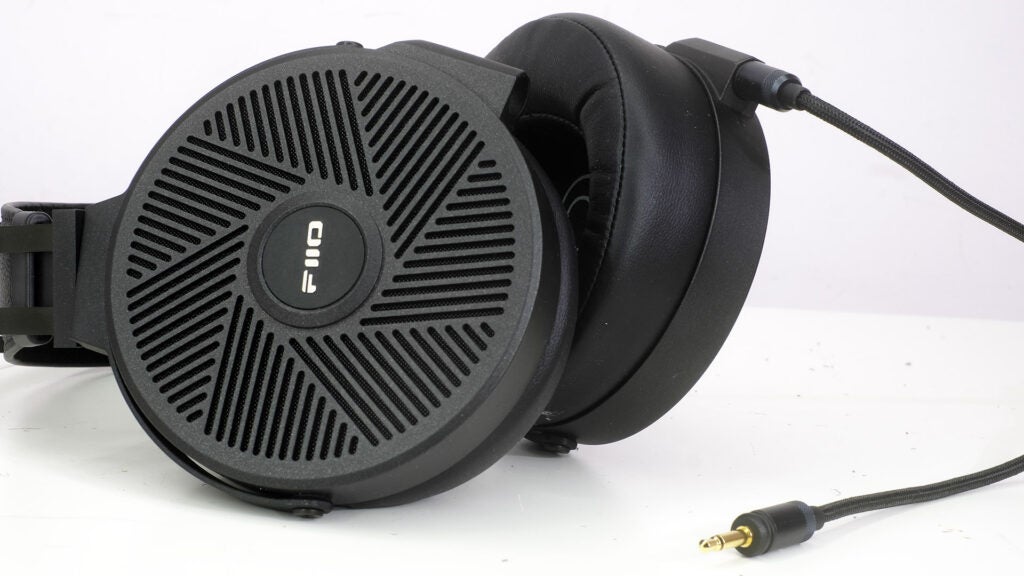
Sound Quality
- Thick and rich round
- There may be too much mid-bass for some
- Highly enjoyable tonality
On first listen to the FiiO FT5, I wasn’t initially convinced by them. They don’t sound like a typical planar magnetic headphone, and I’ve been a fan of these things for ages.
The FiiO FT5 are thicker, richer, and altogether bolder sounding than the planar pairs from HiFiMAN and Audeze I’ve loved in the past. However, the real problem here was I was listening to a podcast at that point, not music.
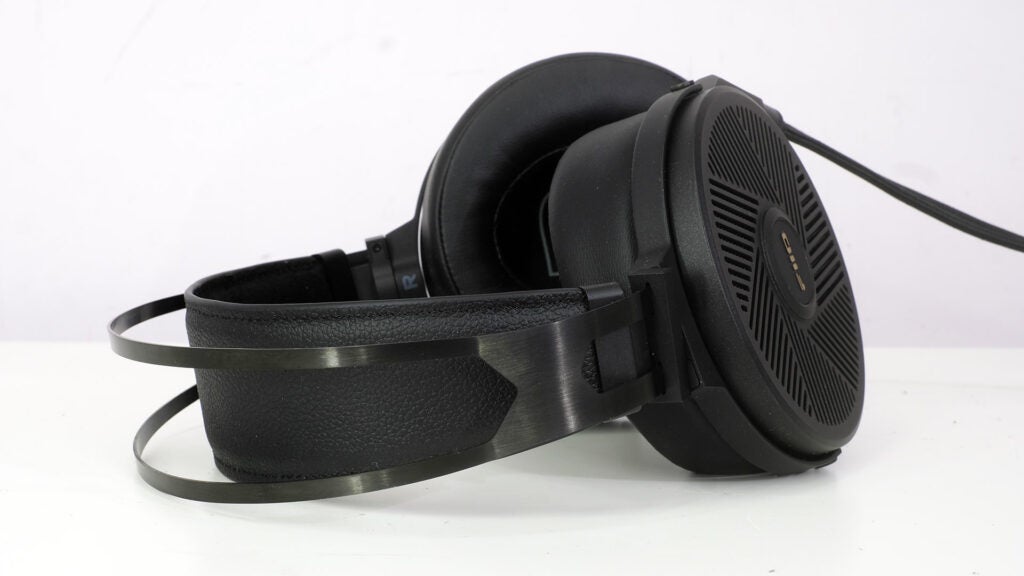
I was responding to the extra padding in the lower-mids, which you can often hear clinging to spoken word audio like rock wool insulation. In the context of music, though, you begin to understand why its here.
The FiiO FT5 are made to sound rich and opulent, with a certain chunkiness to them that makes my HiFiMAN Sundara sound a little anaemic in direct comparison.
Combine that with deep and hard-hitting bass and the FiiO FT5 start to seem more like a sort of grown-up “fun” headphone rather than one that might just be called chubby-sounding.
Their treble is also quite laidback compared to that of the best planar magnetic alternatives.
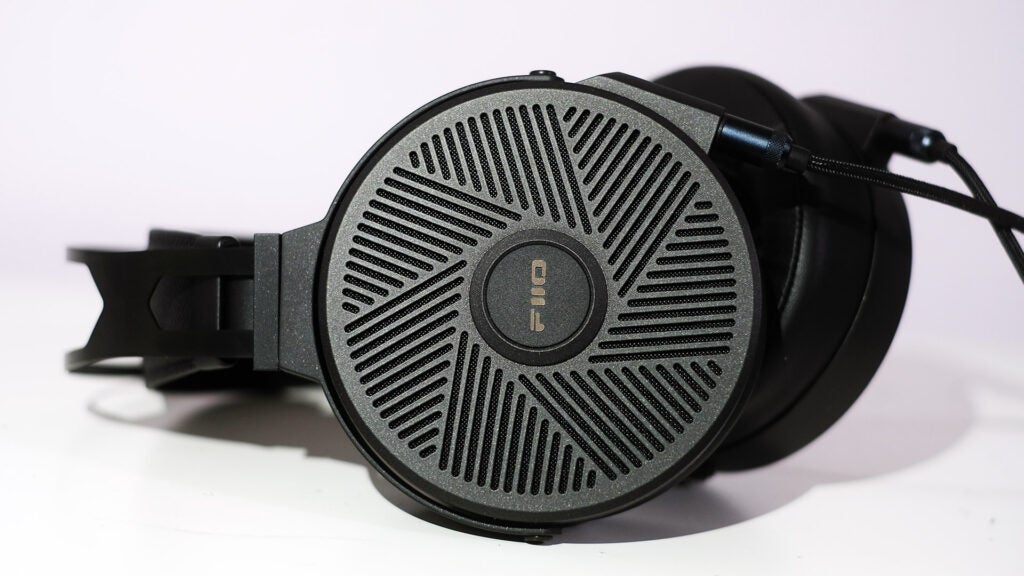
These kind of observations would usually come with the caveat that a pair of headphones isn’t necessarily the most detailed. But the FiiO FT5 are great in this area. Resolution here will just embarrass most wireless ANC headphones close to this price class.
What you don’t get is that sort of sparky brightness that instantly telegraphs a headphone is about bringing out detail in a very obvious manner. Instead its presentation of detail is a little more subtle. You might call it a natural or realistic one, in that the detail here comes from an ability to persuasively resolve texture notably well across the bass and mids, without needing to rely so much on those upper frequencies to generate that sense of “clarity.”
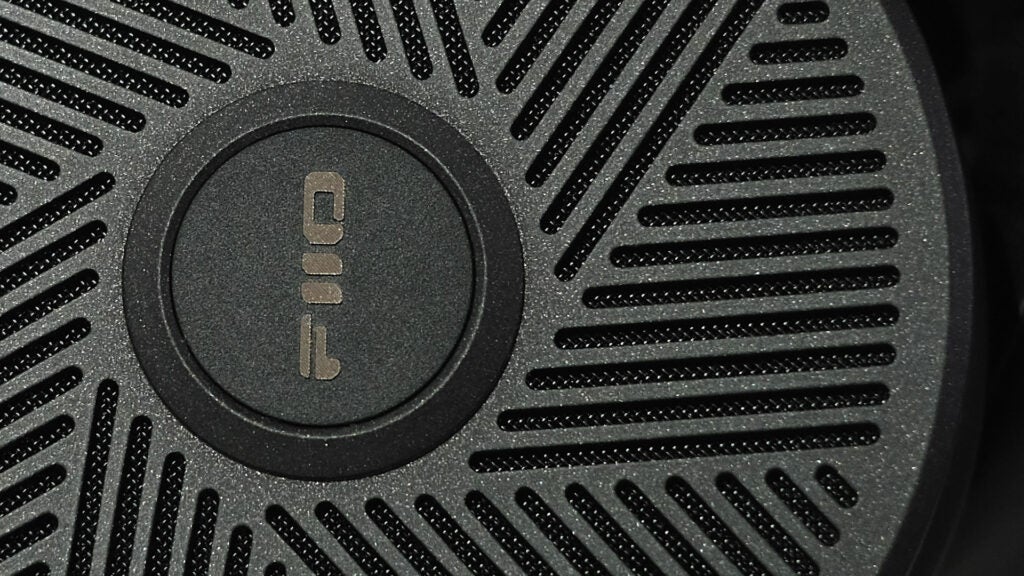
A lot of my favourite headphones of the past, like the Sennheiser HD 800 and my current main home pair, the HiFiMAN Sundara do just that — lean on brighter treble to give the sound more pep. Some ears love that, some don’t.
If you find your ears are very sensitive to hot, spiky, or harsh treble, you’ll enjoy the FiiO FT5 as there’s just none of that here.
Latest deals
Should you buy it?
You want a less analytical high-end home headphone
FiiO has managed to make the FT5 sound like both a high-end headphone and one with a particularly pleasing, relatively easygoing signature that doesn’t have any of that cold, analytical flavour of some other serious headphones.
You prioritise transparency and treble detail
Rival planar magnetic headphones from companies like Audeze and HiFiMAN tend to have a brighter sound and more reserved mid-bass, which can to some ears sound cleaner and more detailed.
Final Thoughts
The FiiO FT5 are my favourite planar magnetic headphones to date that don’t mine the usual benefits of this driver type. They sound richer, bolder and thicker, and do so without becoming leaden or murky.
If you want hear more neutral tuning, you should probably head to the HiFIMAN Sundara or Edition XS instead, though.
This is more like an elevated take on the style of a mainstream consumer headphone, which in itself is an interesting concept — especially when FiiO pulls it off as well as it does in the FT5.
How we test
We test every set of headphones we review thoroughly over an extended period of time. We use industry standard tests to compare features properly. We’ll always tell you what we find. We never, ever, accept money to review a product.
Find out more about how we test in our ethics policy.
Tested for more than a week
Tested with real world use
FAQs
The FT5 have larger 90mm drivers, the FT3 dynamic drivers that are 60mm in diameter. They are very different headphones as a result.
The FiiO FT5 are rated for 7Hz-40kHz frequency response.
The FT5 are rated at 110dB/Vrms, meaning they can be driven without a dedicated amp.
Verdict
FiiO’s first planar magnetic headphones don’t sound like the competition, with a thicker and richer presentation than most. Just make sure you can make peace with how the mid-bass limits transparency a little before buying.
Pros
- Tough metal cups
- Comfortable
- Fun, high-resolution sound
Cons
- Bonus mid-bass dampens the planar appeal a little
- Slightly edgy styling may turn off some
-
Planar magnetic driverLarge 90mm planar magnetic driver -
36 ohm impendancePair of headphones that are relatively easy to drive -
WeightWeighs 456g with including the cables
Introduction
You may know FiiO for its DACs, portable music players, amps or its in-ear headphones. But you probably don’t know if for full-size headphones like the FiiO FT5.
The company hasn’t made many. This pair and 2023’s FiiO FT3 are its first attempts at a pair of serious open-backed, full-size hifi-style headphones.
The FiiO FT5 are the more expensive of the two, at £429. Such a price puts then in competition with mega performers like the HiFiMAN Edition XS and Sennheiser HD660S2.
Do they compete? Absolutely. But the sound might not be what you’d assume given the FiiO FT5 have planar magnetic drivers, which are often associated with a controlled and very fast-sounding style, in terms of bass decay. This is an altogether richer, thicker, and grander kind of audio.
The big question: is that what you want?
Design
- Study metal cups
- Removable cabling
- Hammock-style headband
In almost 15 years of reviewing FiiO stuff, I can only recall one FiiO gadget that didn’t basically feel like a brick of solid aluminium. That was 2010’s FiiO E6, a tiny plastic headphone amp you were meant to be able to clip to your shirt.
The FiiO FT5 have no need for such portability concessions and feel about as close to a brick of metal as you’d want headphones to be. Their outer cup housings are (as far as I can tell) a single piece of metal.
I’m not sure the outer bits of home headphones need to be exceptionally tough, but the FiiO FT5 sure do feel just that. Of course, unless you’re careful you will end up scraping off some of the black finish paint. I’ve managed to slightly nick the headband arm part.

Let’s get some of the basics out of the way. The FiiO FT5 are only well-suited for use at home. They let too much sound in for the outdoors, short of an empty field, and leak too much out for office use.
These are classic, low-tech open-back headphones made with a singular focus on sound.
The FiiO FT5’s design seems roundly inspired by the Audeze range, although the look here is a bit more youthful and edgy. I think FiiO went a bit too far with this edginess in the FT3, which basically look like “gamer” headphones. But these? They get a pass, although I personally prefer the more neutral look of the HifiMAN Sundara or Audeze MM-100.
A lot of these planar magnetic headphones can be quite heavy too, but I find the FiiO FT5 perfectly fine despite their weighty-sounding 456g heft. The hammock-style headband and fairly even pressure of the modest clamping force spread it out nicely.

I’ve put in a lot of 4-5 hour sessions with the FiiO FT5: no complaints. It helps that the cups swivel a few degrees from their resting position too.
There’s no folding these headphones flat, though, one reason their bundled carry case is quite as large as it is. Do home headphones like this really need a carry case? I’m not so sure, but the giant fake leather semi-hard one certainly stands out.
FiiO doesn’t use real leather across the case or the headphones. The default pads are synthetic leather, as is the more heavily textured upper of the head strap.

The inner part of the headband that rests on your head is a felt-like material, and FiiO also includes a second pair of pads with a velour finish. These are more breathable, and as such have a slight effect on the sound too. Plus, when HiFiMAN charges up to $129 for largely unremarkable replacement pads, spares are welcome.
FiiO uses a removable cable too. A mono 3.5mm jack plugs into each earphone. And despite there being a sort of notch in the cable terminal, there’s no locking system here. You will be able to use a “generic” replacement if you need to further down the line.
The standard cable has a switchable terminal, and both standard 3.5mm and balanced 4.4mm jacks are included, as are 6.3mm and XLR adapters.

Sound Quality
- Thick and rich round
- There may be too much mid-bass for some
- Highly enjoyable tonality
On first listen to the FiiO FT5, I wasn’t initially convinced by them. They don’t sound like a typical planar magnetic headphone, and I’ve been a fan of these things for ages.
The FiiO FT5 are thicker, richer, and altogether bolder sounding than the planar pairs from HiFiMAN and Audeze I’ve loved in the past. However, the real problem here was I was listening to a podcast at that point, not music.

I was responding to the extra padding in the lower-mids, which you can often hear clinging to spoken word audio like rock wool insulation. In the context of music, though, you begin to understand why its here.
The FiiO FT5 are made to sound rich and opulent, with a certain chunkiness to them that makes my HiFiMAN Sundara sound a little anaemic in direct comparison.
Combine that with deep and hard-hitting bass and the FiiO FT5 start to seem more like a sort of grown-up “fun” headphone rather than one that might just be called chubby-sounding.
Their treble is also quite laidback compared to that of the best planar magnetic alternatives.

These kind of observations would usually come with the caveat that a pair of headphones isn’t necessarily the most detailed. But the FiiO FT5 are great in this area. Resolution here will just embarrass most wireless ANC headphones close to this price class.
What you don’t get is that sort of sparky brightness that instantly telegraphs a headphone is about bringing out detail in a very obvious manner. Instead its presentation of detail is a little more subtle. You might call it a natural or realistic one, in that the detail here comes from an ability to persuasively resolve texture notably well across the bass and mids, without needing to rely so much on those upper frequencies to generate that sense of “clarity.”

A lot of my favourite headphones of the past, like the Sennheiser HD 800 and my current main home pair, the HiFiMAN Sundara do just that — lean on brighter treble to give the sound more pep. Some ears love that, some don’t.
If you find your ears are very sensitive to hot, spiky, or harsh treble, you’ll enjoy the FiiO FT5 as there’s just none of that here.
Latest deals
Should you buy it?
You want a less analytical high-end home headphone
FiiO has managed to make the FT5 sound like both a high-end headphone and one with a particularly pleasing, relatively easygoing signature that doesn’t have any of that cold, analytical flavour of some other serious headphones.
You prioritise transparency and treble detail
Rival planar magnetic headphones from companies like Audeze and HiFiMAN tend to have a brighter sound and more reserved mid-bass, which can to some ears sound cleaner and more detailed.
Final Thoughts
The FiiO FT5 are my favourite planar magnetic headphones to date that don’t mine the usual benefits of this driver type. They sound richer, bolder and thicker, and do so without becoming leaden or murky.
If you want hear more neutral tuning, you should probably head to the HiFIMAN Sundara or Edition XS instead, though.
This is more like an elevated take on the style of a mainstream consumer headphone, which in itself is an interesting concept — especially when FiiO pulls it off as well as it does in the FT5.
How we test
We test every set of headphones we review thoroughly over an extended period of time. We use industry standard tests to compare features properly. We’ll always tell you what we find. We never, ever, accept money to review a product.
Find out more about how we test in our ethics policy.
Tested for more than a week
Tested with real world use
FAQs
The FT5 have larger 90mm drivers, the FT3 dynamic drivers that are 60mm in diameter. They are very different headphones as a result.
The FiiO FT5 are rated for 7Hz-40kHz frequency response.
The FT5 are rated at 110dB/Vrms, meaning they can be driven without a dedicated amp.


















